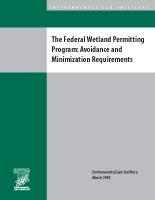Bad Actors in a Chemical Society
Nitrogen by itself is inert. But add other chemicals and it becomes an evil character.
Nitrogen by itself is inert. But add other chemicals and it becomes an evil character.

In the wake of the Supreme Court’s decision in Sackett v. EPA, citizen-developers are fighting back against doubtful Clean Water Act enforcement actions. Two subsequent lower-court decisions provide backing for the public in developing alleged wetlands.
Welcome to the Environmental Law Institute’s Resource Center for the listing of impaired waters and development and implementation of Total Maximum Daily Loads (TMDLs). This website is intended to provide everyone, from the interested citizen to seasoned practitioners, easier access to the documents, innovative ideas, practical examples, and contacts central to effective restoration and protection of America’s waters.
ELI examines the relationship between infrastructure for water, sewer, and stormwater management, and finance and development decisions. The program evaluates practices and promotes the sustainable use of water and the connection between sewer infrastructure and smart growth.
Priority Areas of Expertise and Resources:
The U.S. Supreme Court issued the latest in a series of rulings defining the scope of the federal Clean Water Act in 2023, in Sackett v. United States. Prior rulings also affected the reach of the Act, including SWANCC v. U.S. Army Corps of Engineers (2001) and Rapanos v. United States (2006), created great uncertainty for landowners, environmental advocates, and regulators about whether many types of wetlands, small and intermittent streams, and other waters are subject to federal jurisdiction.

This report compares state numeric water quality criteria to recommended criteria and related standards issued by the United States Environmental Protection Agency.

This report compares state numeric water quality criteria to recommended criteria and related standards issued by the United States Environmental Protection Agency.

Significant attention has been paid over the past 20 years to improving the third step in the mitigation sequencing requirement of the Clean Water Act § 404 regulatory program—-compensatory mitigation—-to ensure that the compensation being provided is ecologically effective, self-sustaining, protected in perpetuity, has “assurances of long-term sustainability and stewardship,” and ultimately meets the program’s goal of no net loss. This report focuses on the first two steps in the sequencing process which, to date, have received far less attention: avoidance and minimization.

This report compares state numeric water quality criteria to recommended criteria and related standards issued by the United States Environmental Protection Agency.